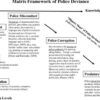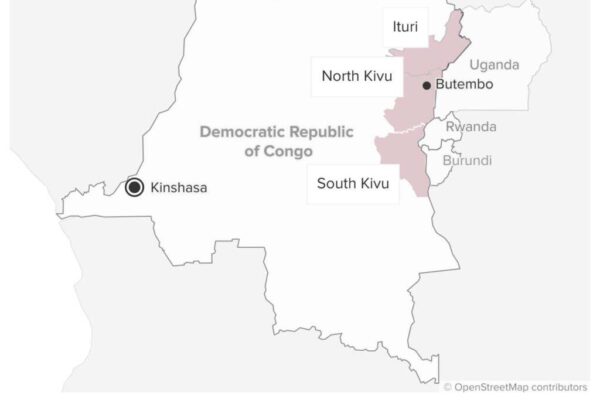Follow
Experienced leaders who have been fortunate to work in diverse working environments might agree with the Situational Leadership Theory that “proposes that leadership styles should match the situation at hand” (Kinicki & Kreitner, 2011, p. 351) to motivate and influence employees. Situational leaders adapt and adjust their management style based on the Situation at hand and their team’s skill-set, development, and maturity levels. It requires change management skills and looking at events and matters from multiple perspectives, rather than the “old school” method of being one-dimensional, bravado, intimidating, or managing based on the manager’s l’humeur du jour (mood of the day).
In my role as a program manager for a United Nations agency in Africa, I used a combination of three different leadership styles- Bureaucratic, Democratic/Participative, and Autocratic. Working in a diverse environment called for managers to adapt to the specific Situation and a team’s behaviors and attitudes to achieve organizational goals and successful project outcomes. However, there are other leadership styles that people are talking about that will enable a manager to gain the trust and respect of their employees. As well as lead, inspire, and empower- the Servant-Leadership and the Charismatic/Transformational leadership.
Personal Leadership Style
As a supply chain program manager responsible for three units – Property Control & Inventory, Property Disposal, and Supply, I managed routine assignments, complex projects, and occasional emergencies. I used a combination of leadership styles depending on the type of work I had to tackle and the kind of team I had at the time.
Bureaucratic Leadership
 As the primary lead for property management, overseeing the United Nations (UN) property was a crucial requirement in the Kigali office, and it required specific competencies and skills. Especially when planning, organizing, and carrying out verification and disposal (sale, transfer, donation) exercises. One had to have integrity, accountability, and thorough knowledge of UN Property Management guidelines, Standard Operating Procedures (SOPs), and UN Financial Regulations and Rules. As a priority to avoid mismanagement, discrepancies, lost or stolen property, and investigations, I used the bureaucratic leadership style. I worked by the book, following rules rigorously and ensured that my staff adhered to procedures precisely.
As the primary lead for property management, overseeing the United Nations (UN) property was a crucial requirement in the Kigali office, and it required specific competencies and skills. Especially when planning, organizing, and carrying out verification and disposal (sale, transfer, donation) exercises. One had to have integrity, accountability, and thorough knowledge of UN Property Management guidelines, Standard Operating Procedures (SOPs), and UN Financial Regulations and Rules. As a priority to avoid mismanagement, discrepancies, lost or stolen property, and investigations, I used the bureaucratic leadership style. I worked by the book, following rules rigorously and ensured that my staff adhered to procedures precisely.
Democratic/Participative
 The Democratic or Participative leadership style is when the leader makes final decisions. However, they invite other members of the team to contribute to the decision-making process. This leadership style increases job satisfaction by involving team members, but it also helps develop an employee’s skills. Team members feel in control of their destiny, so they’re motivated to work hard by more than just a financial reward. Depending on the project or routine assignment, I also used the Democratic leadership style by allowing my staff to use their discretion when carrying out some of their duties, such as raising requisitions, issuing supplies, performing database operations, or carrying out a project.
The Democratic or Participative leadership style is when the leader makes final decisions. However, they invite other members of the team to contribute to the decision-making process. This leadership style increases job satisfaction by involving team members, but it also helps develop an employee’s skills. Team members feel in control of their destiny, so they’re motivated to work hard by more than just a financial reward. Depending on the project or routine assignment, I also used the Democratic leadership style by allowing my staff to use their discretion when carrying out some of their duties, such as raising requisitions, issuing supplies, performing database operations, or carrying out a project.
Autocratic Leadership
 Autocratic leadership is an extreme form of transactional leadership and is when leaders have absolute power over their workers and team. I agree with experts when they say most people tend to resent this type of treatment as an adult-employee. However, with unskilled jobs, this leadership style can remain useful for control and outweigh the disadvantage.
Autocratic leadership is an extreme form of transactional leadership and is when leaders have absolute power over their workers and team. I agree with experts when they say most people tend to resent this type of treatment as an adult-employee. However, with unskilled jobs, this leadership style can remain useful for control and outweigh the disadvantage.
My experience using the autocratic leadership style involved me managing outsourced workers at the tail end of my time as a program manager in the Kigali office. We didn’t have sufficient resources to complete the liquidation project since most of the workforce had been downsized. I received approval to hire casual workers to assist with the unskilled yet necessary responsibilities to achieve successful outcomes to complete projects.
Leadership Styles People Are Talking About in the Development, NGO & Public Sector
 The Servant-Leadership style “emphasizes increasing a leader’s service to others. Using a holistic approach to work, promoting a sense of community, and sharing power in decision making. Some of Servant-Leader characteristics are: to be a good listener, be empathic, be a healer, show awareness, be persuasive, use conceptual thinking, have foresight, show stewardship, be committed to growth and build community” (Kimberley, 2010).
The Servant-Leadership style “emphasizes increasing a leader’s service to others. Using a holistic approach to work, promoting a sense of community, and sharing power in decision making. Some of Servant-Leader characteristics are: to be a good listener, be empathic, be a healer, show awareness, be persuasive, use conceptual thinking, have foresight, show stewardship, be committed to growth and build community” (Kimberley, 2010).
 The Charismatic/Transformational leadership styles are very similar. Leaders inspire lots of enthusiasm in their teams and are very energetic at driving others forward, and they use the right leadership style for the Right Situation. According to Kimberley (2010), “a Transformational leader has the following qualities: integrity, sets clear goals, clearly communicates a vision, sets a good example, encourages, supports, recognizes good work and people, provides stimulating work, helps people see beyond their self-interest and focus more on team interests and needs and inspires.”
The Charismatic/Transformational leadership styles are very similar. Leaders inspire lots of enthusiasm in their teams and are very energetic at driving others forward, and they use the right leadership style for the Right Situation. According to Kimberley (2010), “a Transformational leader has the following qualities: integrity, sets clear goals, clearly communicates a vision, sets a good example, encourages, supports, recognizes good work and people, provides stimulating work, helps people see beyond their self-interest and focus more on team interests and needs and inspires.”
The influence leaders have over others is significant. A manager who uses various leadership styles that match particular situations and employees’ specific personality types is essential for organizations and other work-related environments to achieve higher performance improvements. It could be said that learning and incorporating the qualities prescribed to the Servant-Leadership and Charismatic/Transformational leadership will enable a manager to gain the trust and respect of their employees. Lead, inspire, and empower their employees to learn more, be happier in the workplace by feeling fulfilled and valued, and create loyal workers.
If you are an employee or manager and would like to share what leadership style works best for you, feel free to share your comments in the box below.
References
Kinicki, A., & Kreitner, R. (2011). Situational Theories. In Organizational Behavior key concepts, skills & best practices (5th ed., p. 351). McGraw Hill. (Original work published 2003)
Leadership Styles using the Right One for the Situation. Retrieved December 10, 2010, from http://www.mindtools.com/pages/article/newLDR_84.htm
Spears, L. (2004, Fall). Practicing Servant-Leadership. Retrieved December 8, 2010, from http://www.leadertoleader.org/knowledgecenter/jounal.aspx?ArticleID=51.
Kimberley, C. Types of Leadership Styles in Business. Retrieved December 10, 2010, from http://www.ezinarticles.com















